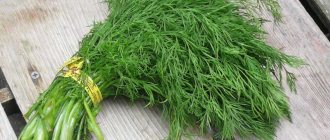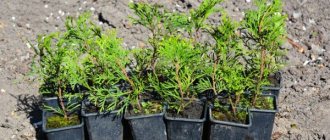Varieties: description and photo
Titanium
This is an ampelous, climbing flower that grows in Africa. It belongs to the periwinkle species. The bush reaches 70 centimeters in height. The diameter does not exceed 15-18 centimeters. Known for its abundant red-hued blooms. The leaves are elongated, oval in shape, bright green in color. Titanium has a special aroma.
The variety loves warmth and open sunny places, but also grows well in the shade. The optimal soil is light, loose with a sufficient amount of trace elements and minerals.
Propagated by seeds. Titanium is used to decorate balconies or loggias. Several seedlings are planted in a hanging pot. Although the variety is resistant to cold, it does not tolerate frost, so the flower pots are moved indoors for the winter.
Mediterranean
A common variety with many subvarieties (Mix, White, Rose), differing in color:
- red;
- white;
- light pink.
This is a low-growing bush, reaching a height of about 13-15 centimeters. The plant belongs to the annual indoor flowers. The stems are long and branching, growing up to 1 meter. The leaves are oblong, bright green.
The flowers are arranged tightly to each other and are large in size, 5-6 centimeters in diameter. The color range varies from bright red to light white. A feature of the Mediterranean is the rapid growth and rapid formation of the bush, as well as lush flowering. Propagated by seed. Catharanthus blooms at the end of May, beginning of June .
White
The shoots of the plant reach more than 1 meter in length. Each stem is densely covered with flowers and foliage. The flowers vary in shades - cream, white, pink. They grow up to 5 centimeters wide.
The leaves are dark green, decorative. Reproduction occurs from pre-sown seedlings . The variety prefers light and fertile soil. White loves moisture, but is resistant to dry climates. It is grown in flower beds and grows well, covering the surface of the earth with a bright carpet.
Strawberry
A relatively new variety of ampelous catharanthus. This is an annual, grows as a low-growing shrub, up to 20 centimeters high. The stems branch and grow quickly, the length of adult shoots starts from 50 centimeters.
The leaves are oblong, shiny, bright green. The flowers are large, soft pink, with a bright red core, up to 4 centimeters in diameter. They have 5 rounded petals. The Strawberry series boasts a variety of shades of pink .
Sowing of seeds is carried out in March or April. It is particularly moisture resistant. Flowering is long-lasting, beginning in May and lasting until September. It is recommended to grow in hanging pots, flowerpots on terraces and open flower beds in the garden.
Pink
Natural varieties are common in:
- Madagascar;
- Indochina;
- Cuba.
The variety belongs to the evergreen subshrubs. It grows up to 1 meter in height. The stems are branched and erect. The leaves are oblong, the petioles are short, they are bare, shiny, and have slight pubescence. The foliage is dark green in color, grows oppositely, the midrib is pronounced, white. Leaf length is 6-7 centimeters, width is 3-4 centimeters.
The flowers are medium in size, about 3 centimeters in diameter, with white, pink, and variegated petal colors. The seeds are black, small.
We invite you to watch a video about Catharanthus rosea:
You will find more information about what pink catharanthus is in this material.
Apricot
Apricot Catharanthus is a subspecies of Catharanthus Mediterranean . The variety is classified as a decorative indoor perennial. In the southern regions it is planted in open ground as an annual flower. Belongs to evergreen subshrubs up to 12-15 centimeters high. The stems are long, more than 50 centimeters, creeping.
The flowers are large, 5-6 centimeters wide. Flowering begins in late spring and continues until early autumn. The variety is heat-loving. Does not tolerate drafts and cold winds. Usually grown in spacious hanging baskets.
Mix
To create a colorful, variegated flower bed, experienced gardeners grow several varieties of ampelous catharanthus at the same time. A mix of different colors creates a bright composition. To create a multi-colored mix, seedlings of pink and white, red and apricot subspecies of the Mediterranean series are planted in each pot. Plant care is simple :
- Selection of fertile soil.
- Warm landing place.
- Optimal moisture maintenance.
- Moderate watering.
Flowers of the same shape, but of different colors look impressive and colorful in the same pot or in the same flower bed.
Planting catharanthus seeds at home
At home, planting catharanthus seeds is carried out as follows:
- Fill the container with the prepared substrate and compact it.
- Then grooves 2 cm deep should be made on the surface of the soil.
- Seeds treated with a growth stimulant should be placed in the grooves. The distance between adjacent seeds should be at least 2 cm.
- Cover the arranged seeds with a layer of substrate 0.5 cm thick.
- Then use a spray bottle to moisten the surface.
- After this, it is recommended to cover the container with glass and place it in a dark, warm place.
- Every day you need to ventilate the container and wipe off condensation from the glass.
At a temperature of 18 degrees, seedlings will appear in 3 weeks, and if the temperature is above 20 degrees, they may appear earlier. The main thing is not to miss this moment, otherwise the sprouts may die in the dark
Growing
From seeds
Sowing is carried out at the end of February or beginning of March.:
- A special drainage layer of 3-5 centimeters is placed in the container for seedlings.
- Seeds are sown to a depth of 2 centimeters.
- After planting, the crop is covered with film or glass.
- Complete darkness is necessary for seed germination.
- The optimal temperature is 24 degrees.
- The greenhouse needs constant ventilation and regular moistening.
- After a week, the first shoots will appear.
- After germination of the seed, the box is placed in a lighted place.
- After 14-15 days, mineral fertilizing is carried out.
- Picking occurs when the seedlings have formed 4 full leaves.
We talked in more detail about the rules for growing catharanthus from seeds here.
From cuttings
The procedure is done in the first month of spring:
- The tops of cuttings 6-7 centimeters long are cut obliquely.
- Apical cuttings are treated with Kornevin for rapid rooting.
- Next, the cuttings are placed in water or clean coarse sand.
- Then the seedlings are covered with glass.
- To form a beautiful bush and to obtain lush and generous flowering, it is recommended to pinch the tops of the seedlings 2 times.
- When the seedlings take root, they are planted in special peat cups and planted in open ground (we talked more about planting catharanthus in open ground here). Seedlings are planted at a distance of 30-40 centimeters. Perlite and river sand are added to the soil for cuttings in equal proportions.
By division
Ampel varieties of catharanthus are also propagated by division during transplantation . The procedure is simple, performed in the spring, in April:
- The mother bush is divided into parts with roots - layering without damage.
- The cut areas are treated with charcoal.
- Each part is planted in a separate spacious, deep pot.
How to care
Let's find out what kind of care is required for catharanthus growing in the garden.
Watering
The soil in the garden bed needs to be moistened abundantly and often: a tropical flower needs a microclimate saturated with moisture. However, an excess of water should not be allowed - stagnation of liquid in the soil negatively affects the health of the plant. If it’s raining, you don’t have to water it all this time.
Attention: in addition to watering, catharanthus also needs spraying: especially if the weather is hot outside.
Top dressing
Additional nutrition is important for the plant. Fertilizing should begin in the spring, using mineral compounds. When the catharanthus begins to bloom, focus on potassium-phosphorus supplements, which promote more active budding. Application frequency: once every 2-3 weeks. After flowering, you can stop feeding the plant.
In this case, you should be careful when adding organic matter. You can easily exceed the dose, resulting in dangerous burns to the sensitive roots of the plant. If you really want to use organic matter, then choose wood ash: it is both a useful and safe fertilizer. But before adding, be sure to dissolve the ash powder in water.
Trimming
When grown outdoors, catharanthus is rarely pruned: usually indoor plants undergo the procedure. However, if you want to make the shrub more decorative, you can trim it outdoors. The optimal time for the procedure is summer, before flowering.
After pruning, the start of flowering will be postponed a couple of weeks later: during this period, the branching of the bush will increase and the main trunk will become denser.
Reproduction
We examined the process of seed propagation in some detail. But you should know that in addition to seeds, catharanthus can also reproduce vegetatively: by cuttings and dividing the bush.
Cuttings
It is necessary to cut the planting material from the apical part of the mother plant: the survival rate of such cuttings is much higher. The procedure is carried out in the spring and is suitable for indoor catharanthus. As a rule, cuttings take root well and grow their own roots quickly and without any problems.
Dividing the bush
Only adult, overgrown catharanthus undergoes the procedure. Division is carried out in the spring, simultaneously with the next planned transplant. Each division must have its own root system - if this condition is met, it quickly takes root and begins to grow.
Features of care
Temperature
Catharanthus ampelous is a heat-loving flower, the temperature is 25-27 degrees in the summer. Temperatures reduced to 8-10 degrees contribute to delayed flowering and growth.
Watering
Watering for hanging catharanthus varieties requires moderate but regular watering.
After watering indoor flowers, excess water should be drained so that excess moisture does not stagnate in the roots of the plant.
In autumn and winter, watering is done less frequently, when 1 centimeter of the top layer of the substrate dries out. In the summer months, additional spraying of the greenery of the bush is necessary.
Light
Ampelous catharanthus loves light , some varieties are able to grow in open flower beds. To avoid burns of foliage and burning of flowers, slight shading is required on hot days. Flowerpots and hanging baskets are recommended to be installed on the west or east side of the apartment.
Soil and pot
Soil composition for ampelous catharanthus: garden soil, leaf soil, turf soil, high-moor peat, expanded clay as drainage (ratio: 1:1:1:1:1).
The pot is deep, spacious and with sufficient drainage holes.
You will find more useful recommendations regarding growing and caring for catharanthus in a separate article.
Preparing for sowing catharanthus
Before you start planting seeds, you should take time to prepare the seeds to get beautiful and healthy plants.
The preparation process is simple, so inexperienced gardeners can start with catharanthus.
Seed selection and preparation
When purchasing catharanthus seeds, you should pay attention to the expiration date, since they remain viable only for 2 years. The seed preparation process includes the following procedures:
- Etching - carried out to destroy various infections. To do this, the seeds are wrapped in gauze and dipped in a weak solution of potassium permanganate (2 grams per 1 liter) for 30 minutes.
- Treatment with a growth stimulator is carried out to obtain good seedlings.
Treating seeds in a weak solution of potassium permanganate.
The following can be used as growth stimulating drugs:
- Zircon - 3-4 drops of the substance are dissolved in 100 ml of water. The drug contains natural extract of purple echinacea, hydroxycinnamic acids and ester compounds. By soaking seeds in Zircon, they germinate much faster and will be resistant to changes in temperature, humidity, and changes in the chemical composition of the soil.
- Epin - 3 drops per 100 ml of water. The seeds are moistened with the solution for 3 hours before planting. Epin increases the immunity of sprouts, improves the decorative qualities of the plant, and prolongs the flowering period.
- Succinic acid - one tablet is dissolved in a liter of water and the seeds are moistened for 20 hours before planting.
Succinic acid increases the immunity of sprouts and helps to absorb organic substances in the fertilizer faster and better.
After carrying out the preparatory procedures, the seeds should be dried.
Soil preparation
Soil for catharanthus can be obtained in the following ways:
- Prepare it yourself - for this you need to have access to nearby peat bogs, deciduous soil and coarse river sand. You can also purchase the components in the store and use them to make your own primer for catharanthus.
- Buy ready-made soil intended for indoor plants, in particular geraniums.
To prepare the soil for catharanthus, you need to purchase the following ingredients:
- Peat.
- Turf soil - a layer of soil from meadows and pastures is suitable.
- Leaf soil is soil formed due to many years of rotting of fallen leaves.
- Humus.
- Coarse-grained river sand increases soil aeration and has a good effect on its water permeability.
All these components should be mixed in equal quantities, after which you need to pour this mixture with a solution of potassium permanganate (2 crystals of potassium permanganate per 200 ml of water), then put it in the oven and turn on for 30 minutes. After this time, you need to remove the soil from the oven and let it cool naturally.
Soil calcination
Selection of capacity
The root system of catharanthus is taprooted, there are few lateral branches. The main root grows up to 25-30 cm in length. If you choose a small pot, the plant will soon outgrow it, and the tips of the roots will cover the drainage holes, which is unacceptable. Therefore, it is recommended to immediately purchase a large container so that it will last for a year of life.
If the plant is perennial, then when replanting annually, you should purchase a pot that will be slightly larger than the previous one.
It is recommended to wash used pots with a brush, pour boiling water over them, and then treat them with a solution of potassium permanganate. This is necessary in order to destroy pathogens that can cause various plant pathologies.
Diseases and pests: control and prevention measures
- Late blight . Excess moisture causes rotting of roots and stems. Treatment with fungicidal agents will help in the fight against the disease.
- For powdery mildew, additional spraying with fungicides is used.
- Gray rot. To cope with the disease, it is necessary to adjust watering and air humidity, and also treat the bush with an antifungal drug.
- Mealybugs, aphids - a soap solution or treatment with Karbofos or Aktar will help get rid of them.
Varieties of ampelous catharanthus are stable and unpretentious; they do not require special care and attention. In recent decades, these tropical flowers have gained popularity among gardeners and summer residents.
If you find an error, please select a piece of text and press Ctrl+Enter.











